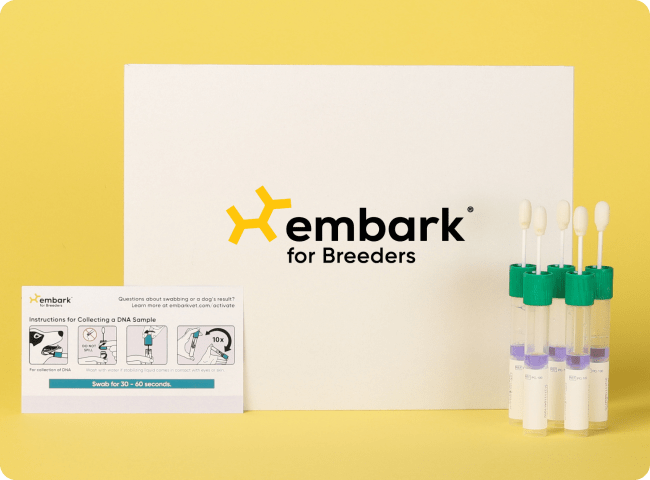Early Bilateral Deafness
Hearing loss can be categorized into three groups: age-related, congenital (hearing loss present at birth), and early-onset (neonatally or during puppy or early adulthood). Causes of hearing loss are diverse, with a complex interaction of genetic and environmental components correlated with specific genes. The bilateral form of hearing loss due to this variant in the LOXHD1 gene occurs early in a dog's life. It is supposed that LOXHD1 has an essential role in maintaining normal inner ear (cochlear) hair cell function.
-
Signs and symptoms
You may notice your dog no longer responding to sounds like clapping, knocking, doorbells, or the vacuum. The dog may appear to become less obedient by no longer responding to verbal commands or their name. They may bark excessively or become difficult to wake.
Deafness is often noted beginning at four to five months of age. However, owners may observe hearing impairment beginning at a few weeks of age. It is uncertain if this form of hearing loss is early-onset or congenital. -
Diagnosis
Veterinarians can diagnose hearing disorders by using brainstem auditory-evoked response (BAER) testing to confirm unilateral or bilateral deafness.
-
Treatment
There are no widespread treatments. Management is aimed at lifestyle changes, training, and reducing the risk of injury.
-
What to do if your dog is at risk
Actions
- Train your affected dog using visual cues (such as hand signals and lights) instead of sounds. New technology, such as gentle vibrating collars, may be beneficial for training.
- Avoid startling a deaf dog, including when waking the dog. Some deaf dogs may become anxious if they find their owner is suddenly gone. Inform the dog when you leave or enter the house by tapping the dog gently on the back.
- Never leave a deaf dog outside alone. You may also want to place a bell on the dog's collar so that you may hear the dog if it becomes lost.
- Put tags on leashes or collars identifying the dog as deaf.
-
Genetic Information
This variant was first identified in Rottweilers.
This variant has an autosomal recessive inheritance, meaning that dogs must have two copies of the variant in order to show clinical signs of Early Bilateral Deafness from it.
Gene names:
LOXHD1 Exon 38 ‐ chr
Inheritance type:
recessive
Citations:
-
Breeds affected
This health condition affects the following breeds
Learn about your dog’s unique genetic health
Dog owners
Breed identification, health and trait insights, personalized care recommendations, and the world’s first canine relative finder—all in one leading dog DNA test.
Learn about the report for dog ownersShop the test
Breeding programs
Embark’s test for breeding programs is one comprehensive DNA test designed with your needs in mind.
Learn about the report for breedersShop the test



